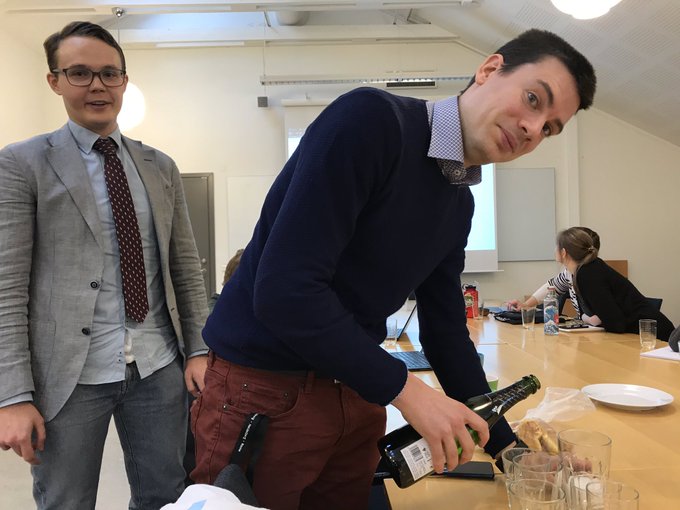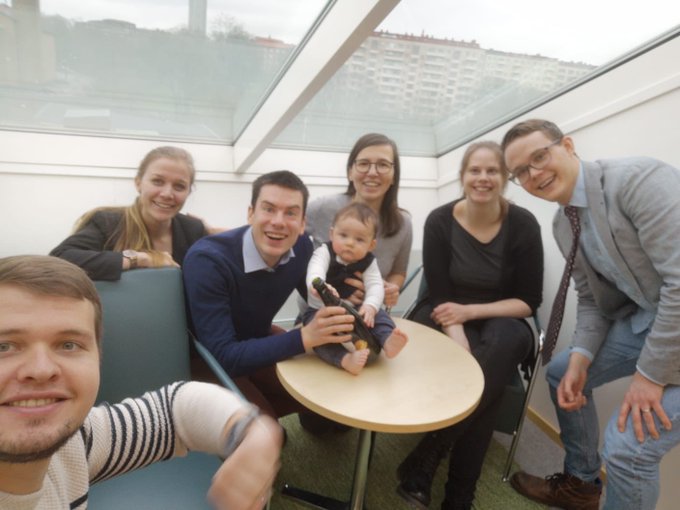After a long saga, Johannes and Niek’s paper describing the replicative ageing on the single cell level is finally out! The work has been published in Scientific Reports. This calls for a celebration – group meeting with the champagne and special guest Max!
In this work, we present a comprehensive dynamic model of replicative ageing in budding yeast, linking cell growth, damage formation, repair and retention together with cell death. We introduced both mathematical analysis and simulations to derive a theoretical framework dictating the conditions allowing for replicative ageing, immortality, starvation and clonal senescence. The proposed model was validated by using time-lapse microscopy imaging of dividing young and old yeast cells that were previously grown in a microfluidics device enabling continues availability of nutrient required for cell growth and division.
We suggest that retention of damage is a byproduct of asymmetric division and is closely linked to replicative ageing, where the maximum degree of retention is proportional to the degree of asymmetry and that there is a maximal degree of asymmetry at which a cell can divide, indicating that the higher the resilience to damage is the more asymmetric the cell division can be. This leads further to a tradeoff between damage resilience and damage retention, implying that investing resources in the capacity to retain damage comes at the cost of a lower degree of resilience to damage for the individual cell.
You can access the paper at: https://www.nature.com/articles/s41598-020-58444-2


